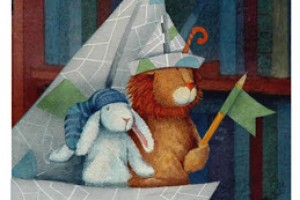At several recent signings, I’ve been approached by high school students interested in writing for children. My responses to their questions will run over a series of blog posts. Perhaps they will assist other students and aspiring writers.
A: Wow, this is a loaded question. There are entire classes that answer this question, but I’ll do my best. The one thing many authors neglect to do is work on their craft–developing the best possible story with interesting characters and gripping language–in the race to be published. I suggest you begin by taking a writing class–perhaps in high school or in college or through a community organization like the Learning Exchange. I also suggest you analyze some of your favorite books or the award winners of the kind of books you would like to write. Don’t just read these books, but dissect them to figure out why they work. How does the plot unfold? What makes the characters so appealing? How does the author keep you turning the pages to get to the end? As you consider your own story, try to incorporate the answers to these questions. And above all, remember that the first draft of anything is usually awful–even for professional writers. Revision makes it readable. Do not plan to be a writer unless you are willing to revise your work multiple times (as in more than 10)! I’m sorry if that sounds preachy, but it’s a hard truth about writing.
Next, I suggest you enter contests and submit to magazines. A few writers published books as teenagers–S.E. Hinton, Amelia Atwater Rhodes, Christopher Paolini come immediately to mind–so it is possible. Remember to treat each submission professionally. That means you must find out how to format your manuscript, what types of stories individual publishers are looking for, researching submission guidelines for each publisher (they’re all different), and develop a professional cover letter or query letter. With every submission, you must look like you know what you are doing even if you feel lost. Research is the key! I suggest beginning with Children’s Writers & Illustrators Market, an annual market guide available in any library, to learn about the market and pick up a few tips.





Leave a Reply
Your email is safe with me.